Nanhua Temple: A Pilgrim’s Guide to Ancient Wisdom and Tranquility
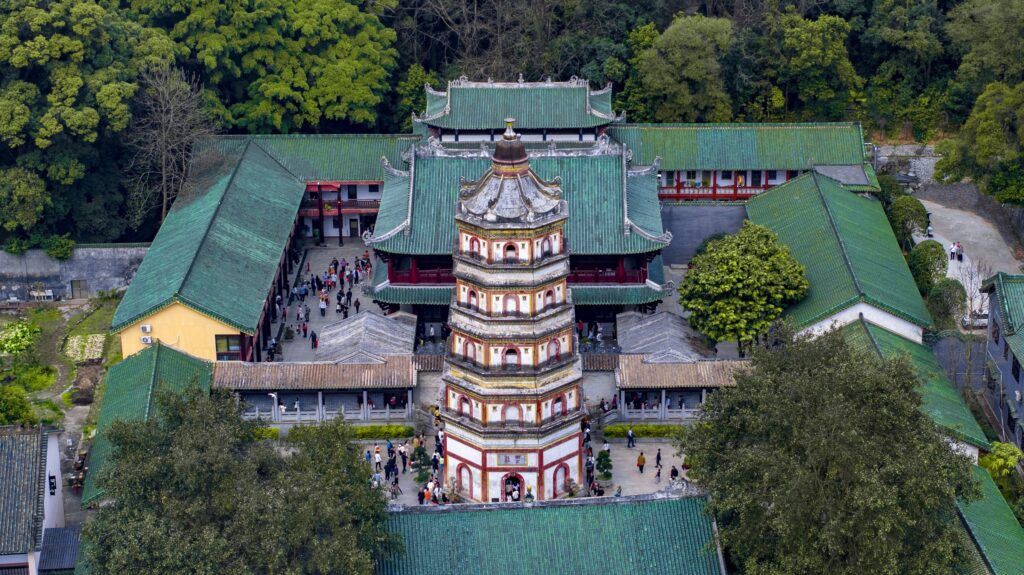
An Essential Guide to Visiting Nanhua Temple
Nestled along the serene banks of the Caoxi River in Shaoguan, Guangdong Province, Nanhua Temple (南华寺) stands as a beacon of tranquility and spiritual heritage. Renowned as one of the most significant Zen Buddhist temples in China, this sacred site is not only a place of worship but also a testament to the rich history and architectural splendor of Chinese Buddhism. As you step through its ancient gates, you’ll be enveloped by a peaceful atmosphere, punctuated by the gentle rustle of leaves and the soft murmur of flowing water.
The temple is dedicated to the revered Sixth Patriarch of Zen Buddhism, Hui Neng, whose teachings continue to inspire countless practitioners worldwide. Here, visitors can explore magnificent halls adorned with intricately crafted statues, lush gardens that invite quiet reflection, and historic relics that chronicle the evolution of Buddhist thought in China. Whether you’re seeking spiritual enlightenment, a moment of calm, or simply a deeper understanding of Zen traditions, Nanhua Temple offers a unique experience that transcends time and culture.
Prepare to be captivated by the temple’s stunning architecture, tranquil environment, and rich cultural significance. As you wander its expansive grounds, take the opportunity to engage with the welcoming monks, learn about the practices of Zen Buddhism, and immerse yourself in the spiritual legacy that has drawn pilgrims and travelers for centuries. A visit to Nanhua Temple is more than just a sightseeing trip; it’s a journey into the heart of Chinese spirituality and an invitation to explore the profound depths of peace that this sacred space has to offer.
In This Guide
- An Essential Guide to Visiting Nanhua Temple
- The Rich History and Legends of Nanhua Temple
- Main Highlights: What You Absolutely Can’t Miss
- Planning Your Visit: A Practical Guide
- Tickets: Prices, Booking, and Tips
- How to Get There: A Complete Transportation Guide
- Local Cuisine and Accommodation Nearby
- Frequently Asked Questions
- Final Thoughts on Your Trip
The Rich History and Legends of Nanhua Temple
Nanhua Temple, known as Nanhua Si (南华寺), stands as one of the most significant and revered Buddhist temples in China, nestled amidst the lush landscapes of Shaoguan in Guangdong Province. Its rich history dates back to the 6th century, and it is intricately linked to the propagation of Zen Buddhism in China, making it a must-visit for history enthusiasts and spiritual seekers alike.
The temple was established during the Tang Dynasty, around 678 AD, and is notably recognized as the site where Huineng, the Sixth Patriarch of Zen Buddhism, taught and preached. His teachings laid the foundation for the Southern School of Zen, which emphasizes sudden enlightenment and direct experience over theoretical knowledge. Huineng’s profound influence on Chinese culture and spirituality is felt to this day, and Nanhua Temple serves as a pilgrimage site for those wishing to connect with his legacy.
Over the centuries, Nanhua Temple has undergone numerous renovations and expansions, reflecting the architectural styles and artistic trends of the various dynasties that ruled China. The temple complex features striking traditional Chinese architecture, with ornate halls adorned with intricate wood carvings and stunning Buddhist sculptures. The Mahavira Hall, in particular, boasts an impressive collection of golden Buddha statues, captivating visitors with its grandeur and spiritual ambiance.
One of the temple’s most significant relics is the preserved body of Master Hui Neng, resting in a stupa on the temple grounds. This sacred site attracts countless devotees who come to pay their respects and to seek enlightenment through meditation and reflection. The serene atmosphere, enhanced by the surrounding greenery and tranquil ponds, provides an ideal setting for contemplation.
Legends surrounding Nanhua Temple abound, adding to its allure. It is said that during his time, Huineng famously demonstrated his teachings through actions rather than words, encouraging disciples to seek truth within themselves. These tales, along with the temple’s historical significance, contribute to its reputation as a spiritual sanctuary that resonates with all who visit.
Today, Nanhua Temple continues to be a vibrant center of Zen practice and Buddhist education. Monks and practitioners maintain the temple’s traditions, welcoming visitors from around the world to explore its rich heritage. Whether you are on a quest for spiritual enlightenment, a lover of history, or simply in search of tranquility, Nanhua Temple offers a profound experience that captivates the heart and soul of every traveler.
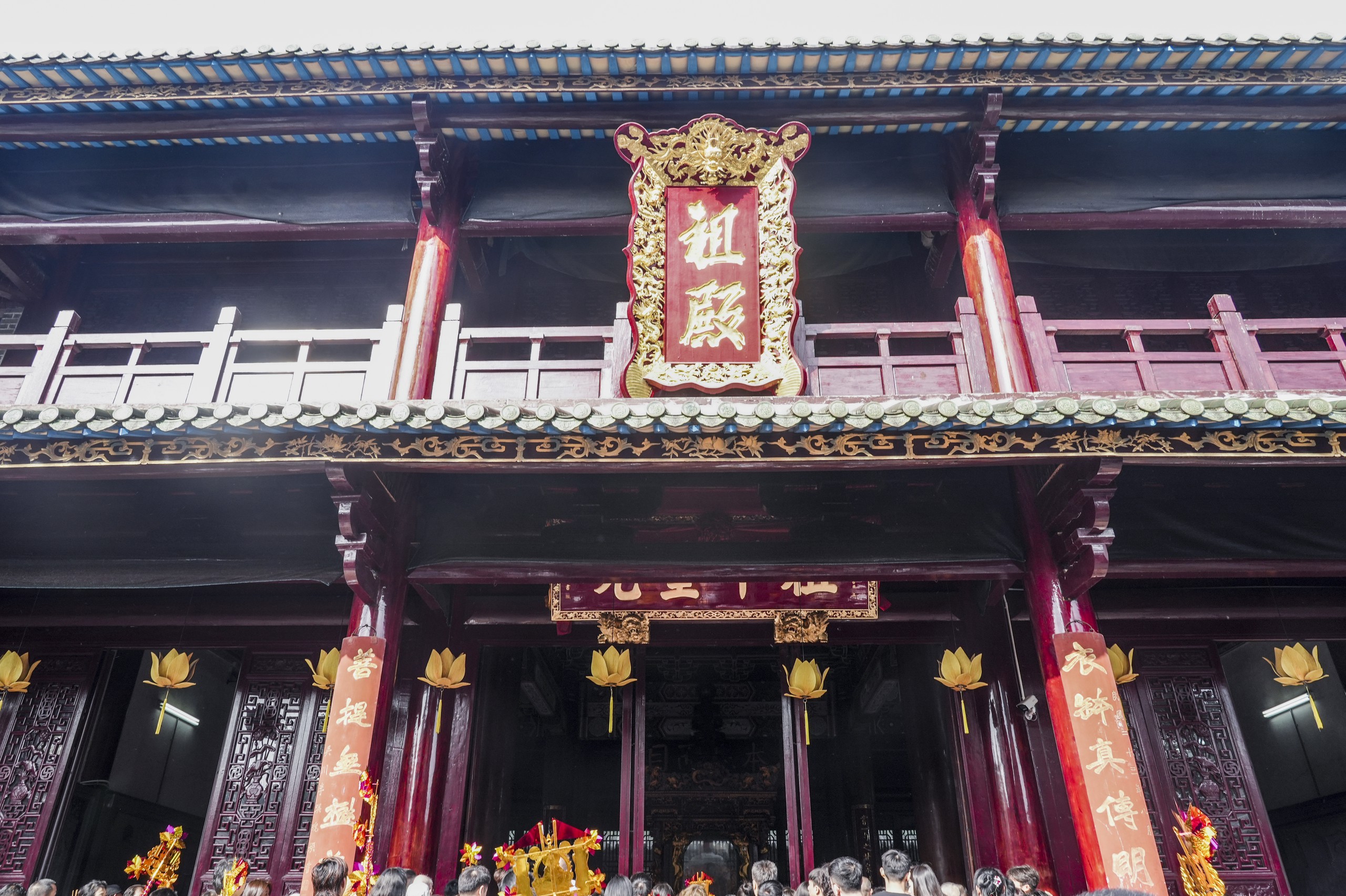
Nanhua Temple.
Main Highlights: What You Absolutely Can’t Miss
When visiting Nanhua Temple (南华寺) in Shaoguan, there are several highlights that will enrich your experience and deepen your understanding of this revered spiritual site. Here’s what you absolutely can’t miss:
1. Mahavira Hall
Step into the majestic Mahavira Hall, the temple’s centerpiece, where you’ll be greeted by stunning golden Buddha statues. This hall serves as a spiritual hub, where visitors can meditate and reflect on the teachings of Buddhism. The intricate carvings and serene ambiance make it a perfect spot for quiet contemplation.
2. Hui Neng’s Relics
Nanhua Temple is historically significant as the final resting place of Hui Neng, the sixth patriarch of Zen Buddhism. His relics are housed here, and many pilgrims come to pay their respects. Exploring this aspect of the temple provides insight into the roots of Zen practices in China.
3. Beautiful Courtyards and Gardens
Wander through the temple’s lush courtyards, characterized by ancient trees, serene ponds, and vibrant greenery. Each corner of the temple grounds is designed to create a peaceful atmosphere, allowing visitors to immerse themselves in nature while reflecting on their spiritual journey.
4. Intricate Architecture
Admire the traditional Chinese Buddhist architecture that defines Nanhua Temple. The ornate roofs, detailed sculptures, and colorful murals tell a story of devotion and craftsmanship. Be sure to capture these stunning visuals, as they are a testament to the temple’s rich history.
5. Cultural Artifacts
As you stroll through the temple, take the time to explore the various cultural artifacts and ancient relics displayed throughout the site. These items offer a deep dive into Buddhist history and serve as a reminder of the temple’s long-standing significance in Chinese culture.
6. Meditation Spaces
For those seeking a deeper connection, the temple offers several peaceful meditation spots. The areas around the tranquil ponds and under the ancient trees provide an ideal setting for mindfulness practice. Don’t rush—take your time to absorb the calming atmosphere and reflect.
7. Local Monastic Life
One of the most enriching aspects of your visit will be witnessing the daily life of the monks who reside here. Their commitment to peace and serenity is palpable, and engaging with them (where appropriate) can offer unique insights into Zen practices and Buddhist philosophy.
8. Surrounding Nature
Take a moment to explore the surrounding landscape, where you’ll find trails leading to scenic viewpoints and serene spots ideal for reflection. The area’s natural beauty complements the spiritual ambiance of the temple, making it a perfect retreat from the bustle of everyday life.
9. Visitor Information
To make the most of your visit, note that the temple is open from 7:30 AM to 5:30 PM daily. Admission is typically affordable, with a small fee that often includes a bundle of joss sticks for ceremonial use.
In Conclusion
A visit to Nanhua Temple is more than just a sightseeing trip; it’s an opportunity to connect with history, culture, and spirituality. Whether you’re drawn by the architectural beauty, the serene atmosphere, or the rich Buddhist heritage, this temple promises a memorable experience that resonates long after your visit.
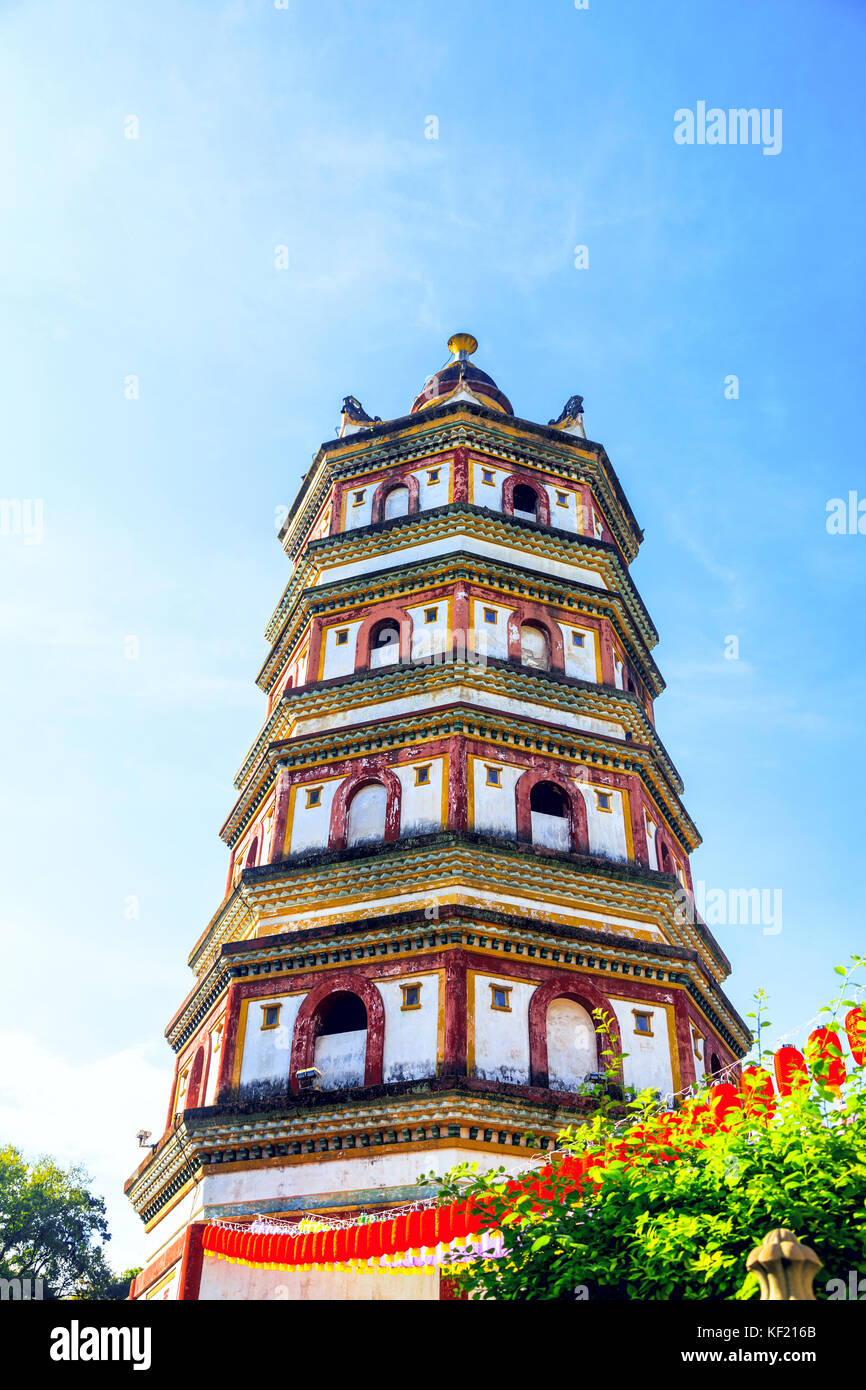
Nanhua Temple.
Planning Your Visit: A Practical Guide
When planning your visit to Nanhua Temple, one of China’s most revered Buddhist sites, there are several practical considerations to ensure a smooth and enriching experience. Nestled in the tranquil surroundings of Shaoguan, Guangdong Province, this temple offers not only spiritual enlightenment but also a deep dive into Chinese culture and architecture.
Getting There
Location:
Nanhua Temple is situated along the Caoxi River, about 7 kilometers east of Maba Town in the Qujiang District of Shaoguan.
Transport Options:
– By Taxi: The most convenient way to reach the temple is by taxi, especially if you’re coming from the Shaoguan High-Speed Rail (HSR) station. Expect to pay around ¥60 for a one-way trip.
– By Car: If you have access to a rental car, there is ample parking available at the temple.
– Public Transport: While public buses do operate in the area, they may be less direct and convenient for international travelers.
Opening Hours
The temple is open daily from 7:30 AM to 5:30 PM. To fully appreciate the serene atmosphere, consider arriving early in the morning when the crowds are thinner and the air is fresher.
Admission Fees
Entry to Nanhua Temple costs approximately ¥20 per person, which includes a small bundle of joss sticks to burn at the entrance. Be prepared to pay this fee in cash.
What to Expect
Nanhua Temple is not just a place of worship but also a cultural landmark. Here’s what you can look forward to:
-
Architectural Beauty: Marvel at the intricate designs of the Mahavira Hall, which houses magnificent golden Buddha statues. The temple complex is surrounded by lush greenery, serene ponds, and ancient trees, providing a peaceful setting for reflection and meditation.
-
Historical Significance: The temple is closely associated with Zen Buddhism and is famous as the resting place of Master Hui Neng, the sixth patriarch of Zen. Exploring the temple grounds allows you to engage with the rich history and traditions of Buddhism in China.
-
Cultural Etiquette: Visitors are encouraged to respect the sanctity of the site. Dress modestly and be mindful of the customs observed by worshippers. If you’re unsure about the appropriate behavior, consider joining a guided tour or engaging with the temple staff for guidance.
Facilities
- Restrooms: Facilities are available on-site, though they may be basic. It’s advisable to carry hand sanitizer for convenience.
- Dining Options: While there are limited dining options within the temple grounds, you can find vegetarian meals at a nearby Buddhist restaurant. Alternatively, explore local eateries in Maba Town for a taste of regional cuisine.
Nearby Attractions
If time permits, consider visiting some nearby attractions:
– Caoxi Hot Spring: A relaxing hot spring experience located about a mile from the temple.
– Maba Man Ruins: Explore ancient historic sites nearby, offering insights into the local heritage.
Tips for Your Visit
- Plan for a Full Day: Given the temple’s size and the richness of its offerings, allocate at least a few hours to explore the grounds.
- Stay Hydrated: Bring a water bottle, especially during warmer months, as you will be walking a lot.
- Photography: While photography is generally permitted, be respectful of worshippers and avoid taking photos in areas where it may be inappropriate.
With its serene ambiance and historical significance, a visit to Nanhua Temple is sure to be a highlight of your travels in China. Whether you seek spiritual solace or simply wish to admire the stunning architecture, this sacred site offers something for everyone. Enjoy your journey into the heart of Zen Buddhism!
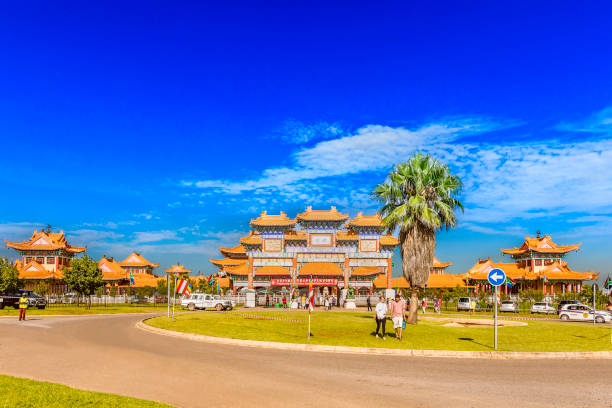
Nanhua Temple.
Tickets: Prices, Booking, and Tips
Visiting Nanhua Temple is not only a journey into the heart of Zen Buddhism but also an experience steeped in serenity and history. Here’s what you need to know about tickets, booking, and smart travel tips to enhance your visit.
Admission Costs
The entrance fee to Nanhua Temple is a modest ¥20 per person, which includes a small bundle of joss sticks for you to burn at the entrance, a customary practice that enhances your spiritual experience. This affordable price makes it accessible for all visitors eager to explore this sacred site.
Opening Hours
Nanhua Temple welcomes guests daily from 7:30 AM to 5:30 PM. It’s advisable to arrive early to fully appreciate the tranquil atmosphere before the crowds arrive. Be mindful of the closing time, as the temple grounds should be vacated promptly at 5:30 PM.
Booking Tips
While no advance booking is required for entry, it’s beneficial to plan your visit during weekdays if possible, as weekends may attract larger crowds. If you’re traveling from nearby cities like Shaoguan, consider hiring a taxi for a hassle-free journey. Taxi fares from the city center to the temple typically cost around ¥200 for a round trip.
Travel Recommendations
-
Plan for a Full Day: Allocate a whole day for your visit to fully immerse yourself in the temple’s beauty and tranquility. The expansive grounds and intricate architecture warrant ample time for exploration.
-
Stay Hydrated and Snack Smart: While there are minimal dining options within the temple, you can find nearby restaurants in the villages after your visit. Bring along water and light snacks to keep your energy up as you wander through the temple’s serene pathways.
-
Respect the Environment: As a spiritual site, Nanhua Temple promotes a peaceful ambiance. Be sure to observe local customs and maintain a respectful demeanor throughout your visit. Dress modestly and engage in quiet reflection to honor the sacredness of the space.
-
Explore Nearby Attractions: If time allows, consider visiting nearby points of interest like the Caoxi Hot Spring or the Shaoguan Lion Rock. These sites can round out your trip with additional cultural and natural experiences.
-
Photography Etiquette: Capture the stunning architecture and serene landscapes, but be mindful of areas where photography may be restricted, especially around sacred relics and during ceremonies.
By keeping these tips in mind, your visit to Nanhua Temple is sure to be both enlightening and peaceful, allowing you to connect deeply with the rich traditions of Zen Buddhism in a beautiful setting. Enjoy your journey!
How to Get There: A Complete Transportation Guide
Reaching Nanhua Temple, one of China’s most revered Buddhist sites, is a journey worth undertaking. This tranquil sanctuary, nestled in the lush landscapes of Shaoguan, Guangdong Province, is accessible via various modes of transportation, ensuring that all visitors can experience its serene beauty and spiritual atmosphere. Here’s how to make your way to this architectural masterpiece.
By Air
The nearest major airport is Guangzhou Baiyun International Airport (CAN), approximately 150 kilometers (about 93 miles) from Shaoguan. From the airport, you can opt for the following options:
- Train: Take the airport express train to Guangzhou South Railway Station. From there, board a high-speed train (G train) to Shaoguan, which takes around 1.5 to 2 hours.
- Taxi: A taxi ride directly from the airport to Nanhua Temple will take approximately 2 to 3 hours, depending on traffic, and will cost around ¥600-¥800.
By Train
Shaoguan Railway Station is well-connected to major cities, including Guangzhou, Shenzhen, and Hong Kong. You can take a high-speed train (G train) or a regular train (K or T train) to Shaoguan:
- From Guangzhou: The G train will get you to Shaoguan in about 1.5 hours. Once you arrive, you can take a taxi to Nanhua Temple, which is about a 30-minute drive (around ¥100).
- From Shenzhen: Similarly, take a train to Shaoguan, with travel times varying from 2 to 2.5 hours, followed by a taxi ride to the temple.
By Bus
Long-distance buses frequently travel to Shaoguan from major cities. The bus station in Shaoguan is located near the railway station, making transfers convenient.
- From Guangzhou: Buses leave from Guangzhou’s Provincial Bus Station or the Tianhe Bus Station and take approximately 2-3 hours to reach Shaoguan. From the bus station, take a taxi to the temple.
By Taxi or Rideshare
If you prefer a direct route, taxis are readily available in Shaoguan. You can also use rideshare apps like Didi Chuxing. A taxi from the city center to Nanhua Temple will cost around ¥100 and take about 30 minutes.
Local Tips
- Entrance Fee: Be prepared to pay an entrance fee of around ¥20 per person. This includes a small bundle of joss sticks for your visit.
- Opening Hours: Nanhua Temple is open daily from 7:30 AM to 5:30 PM, so plan your visit accordingly.
- Transportation within the Temple: Once at the temple, you can explore the vast grounds on foot. The serene environment is perfect for leisurely strolls and meditation.
Conclusion
Whether you’re arriving by air, train, or bus, getting to Nanhua Temple is straightforward. The journey offers a glimpse into the beautiful landscapes of Guangdong, culminating in the tranquil atmosphere of one of China’s most significant Buddhist sites. Make sure to take your time to appreciate the architecture, history, and peacefulness that awaits you at this sacred sanctuary.
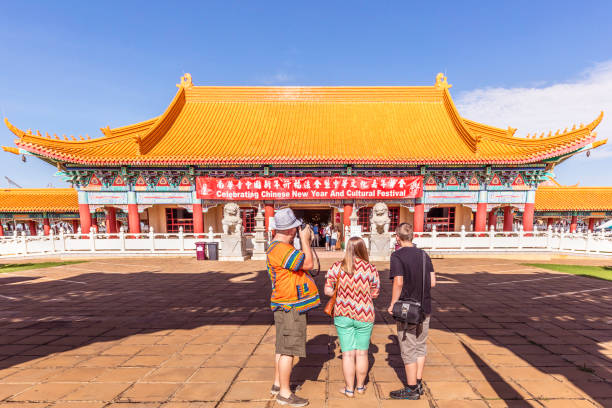
Nanhua Temple.
Local Cuisine and Accommodation Nearby
Nestled in the serene landscape surrounding Nanhua Temple, visitors will find a delightful array of local cuisine and comfortable accommodations that enhance the spiritual experience of this revered site.
Culinary Delights
Mo Fei CoffeeBreak
Just a short drive from the temple (about 2.5 miles), this cozy café offers a variety of beverages and light bites, making it a perfect spot for visitors looking to unwind after exploring the temple grounds. With its inviting atmosphere and friendly staff, it serves as an excellent place to relax and reflect.
Local Restaurants
While dining options directly adjacent to Nanhua Temple are limited, the surrounding villages boast several authentic Chinese restaurants where you can savor local dishes. If you’re craving a taste of the region, seek out restaurants serving specialties like Hakka-style dishes or fresh, locally sourced vegetarian meals. Keep an eye out for countryside eateries known for their home-cooked flavors and warm hospitality.
Comfortable Stays
Nanhua Temple Accommodation
For a truly immersive experience, consider staying within the temple grounds, where basic accommodations are available. It’s an opportunity to enjoy the tranquility of the temple during quieter hours and participate in morning rituals. However, amenities may be limited, so check in advance for availability and details.
Nearby Hotels
If you prefer more conventional lodging, several hotels can be found within a short drive from the temple. Options range from budget-friendly inns to mid-range hotels, ensuring that every traveler can find a comfortable place to rest after a day of exploration. Look for hotels that offer local tours or shuttle services to enhance your visit to the temple.
Exploring Further
After your visit to Nanhua Temple, consider exploring the nearby Caoxi Hot Springs for a rejuvenating soak or a peaceful walk along the scenic paths that wind through the lush landscape. This combination of spiritual enrichment and local culinary experiences will make your visit to Nanhua Temple memorable and fulfilling.
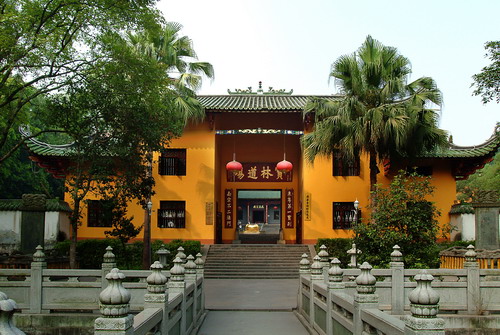
Nanhua Temple.
Frequently Asked Questions
-
What are the opening hours of Nanhua Temple?
Nanhua Temple is open daily from 7:30 AM to 5:30 PM. It’s best to arrive early to enjoy the peaceful atmosphere and explore the grounds before the crowds arrive. -
Is there an entrance fee to visit the temple?
Yes, there is an entrance fee of approximately ¥20 per person. This fee often includes a small bundle of joss sticks, which you can use during your visit. -
How do I get to Nanhua Temple from Shaoguan city?
You can take a taxi from Shaoguan city, which typically costs around ¥200 for a round trip. Alternatively, you can hire a car for a more comfortable journey. There are also public transportation options available, but taxis are the most convenient. -
Are there any guided tours available?
While there are no official guided tours provided by the temple, you may find local guides or taxi drivers who are familiar with the area and can share insights about the temple’s history and significance. -
What should I wear when visiting the temple?
Dress modestly and respectfully when visiting Nanhua Temple. Comfortable clothing and shoes are advisable, as you’ll likely be walking on uneven paths and climbing steps. -
Can I take photos inside the temple?
Photography is generally allowed in the temple grounds, but be respectful and mindful of any signs indicating restrictions, especially in sacred areas. Always ask permission if you’re photographing individuals, particularly monks or worshippers. -
What is the best time to visit Nanhua Temple?
The best time to visit is during weekdays, early in the morning or late afternoon, to avoid larger crowds. Visiting during the spring or autumn months can also enhance your experience, as the weather is typically pleasant. -
Are there eating facilities nearby?
While there are limited dining options within the temple premises, you might find a vegetarian restaurant nearby. For more variety, consider dining in the nearby villages or cafes after your visit. Be sure to try local dishes!
Final Thoughts on Your Trip
As you wrap up your visit to Nanhua Temple, take a moment to reflect on the profound peace and beauty that envelops this sacred site. Nestled in the lush landscapes of Shaoguan, this temple not only serves as a spiritual sanctuary but also as a testament to the rich history of Zen Buddhism in China. The intricate architecture, serene courtyards, and the majestic halls adorned with golden Buddha statues invite contemplation and admiration.
Whether you came seeking enlightenment or simply to appreciate the artistry of its design, Nanhua Temple offers a unique experience that lingers long after you leave. The welcoming monks and the tranquil atmosphere provide an ideal backdrop for meditation and reflection, allowing you to connect with both yourself and the ancient traditions that thrive here.
As you step away from the temple, carry with you the serenity and inspiration that Nanhua has bestowed upon you. This journey through history and spirituality is not just a visit; it’s an invitation to embrace the calm and wisdom that comes from understanding the essence of Zen. May your travels continue to be filled with wonder and discovery, wherever your path leads next!